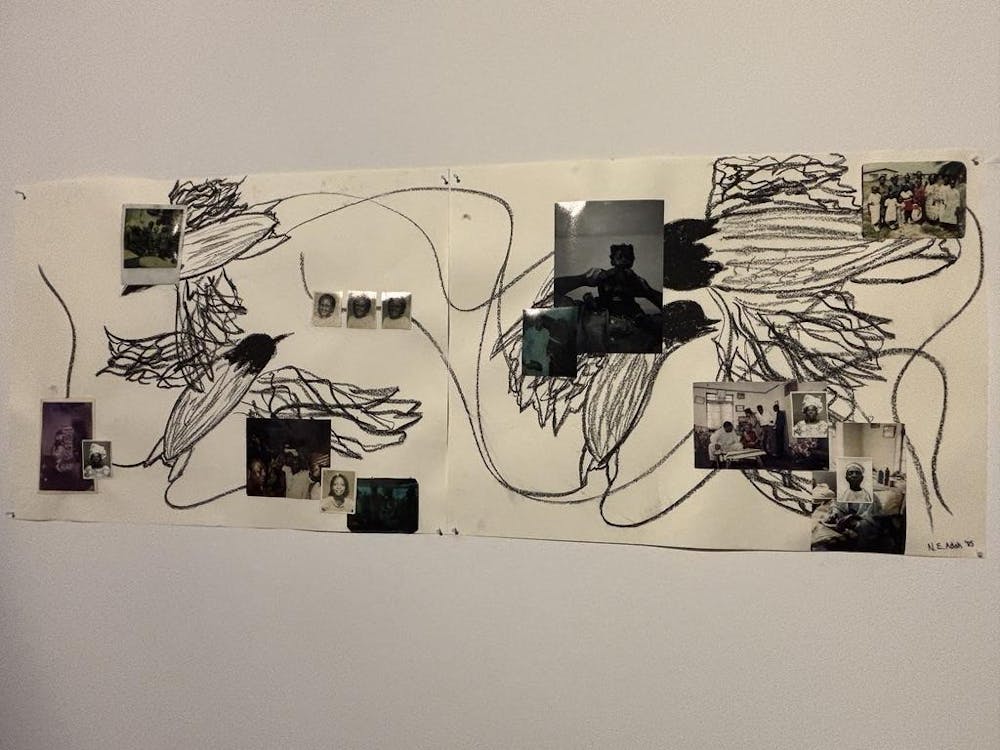You could find her studying late at the library in 1973, alongside other graduate students who all had their own sets of keys. You could find her teaching the history of modern architecture, American art and contemporary architecture in the lecture halls in 1980, founding the New York Academy of Art alongside Andy Warhol and others in 1982 and serving on the University's Board of Trustees from 2003-07. For the past 30 years, Eileen Guggenheim GS has been plugged into the art world both at Princeton and beyond. This week, she will return to campus to participate in a Reunions panel, “Why Art Matters,” with other University faculty and alumni.
Guggenheim earned a doctoral degree in Art and Archaeology from Princeton in 1982. She attended Princeton during what she says was a pivotal time in arts education.
“Life in the department of art and archeology in the ’70s and ’80s was overwhelmingly wonderful," she said in an interview with the 'Prince.' "Princeton has one of the greatest traditions in art history. Intellectually, it was probably the finest art history program in the country and has remained so."
As a student, Guggenheim studied 19th and 20th century paintings, sculptures, architecture and photography. She led precepts for art history and photography and taught a variety of art and architecture classes. Having experienced art at Princeton as a student, teacher and administrator, Guggenheim finds the recent push to advance the arts at the University to be "a very forward-thinking and amazing thing."
“When I was a faculty member, art was not front and center. It was all located at 185 Nassau St. It was not integrated into this whole idea of humanistic studies,” Guggenheim said. “That’s something Shirley Tilghman has put at the front of her agenda to spectacular results in the last 10 years.”
Guggenheim also predicted that the recently announced Edwards Arts Collective and the Arts and Transit Neighborhood would make Princeton "a major art center within a great liberal arts institution."
"It's a bold thing to do, especially since they've done it in the sciences brilliantly," she added. "This kind of integration of the arts is a progressive, 21st century thing to do."
The Arts and Transit neighborhood began construction this past year. At its projected finish in 2017, the neighborhood will include new Lewis Center for the Arts and music department buildings, indoor and outdoor performance venues and public plazas.

More immediately, for the 2013-14 academic year, Mathey College is sponsoring the formation of an art collective that will house 20 students in Edwards Hall. Guggenheim said the Edwards Collective would provide a platform for collaboration in the arts on par with academic collaborations in other departments on campus.
“Artists have always fed off each other, whether they are poets or dancers or sculptors or painters. It is that dynamic relationship among people from different fields of art that creates the most fertile terrain possible,” Guggenheim said. “If you look at the psychology building where the sociologists are right next to the psychologists next to the scientists, they are all collaborating. I think that visual art works in exactly the same way."
Creating fertile terrain for artists is part of what motivated Guggenheim to help found the New York Academy of Art in 1982. The founders, including pop artist Andy Warhol, felt that traditional training for artists was disappearing from the educational system in America.
“We decided to try to preserve the tradition that goes back to the Renaissance. Warhol was very involved because he had gone to the Carnegie Institute where he took foundation courses,” she said.

In a rigorous two-year Master of Fine Arts program, the Academy focuses on the human form and teaches all traditional skills for visual art: drawing, painting and sculpture. It also brings in leading artists from around the world to teach master classes. At the end of the program, students complete a large and ambitious thesis painting or sculpture. Guggenheim currently serves as Chair of NYAA’s Board of Trustees and noted that this final project is similar to the final piece expected of students at the French Academy 200 years ago. In her view, the Academy ultimately aims to provide traditional skills while preparing artists to enter the contemporary art world.
Guggenheim realizes the realities of the art world but is adamant that there are a variety of opportunities for people who wish to pursue a future in the arts.
“We can’t all be successful artists. It is tremendously daunting to think you can create things that are going to have a wide audience. It is a very small percentage of painters and sculptors who succeed. I think that there are incredible opportunities in supporting roles for the arts, particularly in nonprofits. Nonprofits need smart and creative people who can organize people and events to bring attention to the arts. They are absolutely critical to it,” Guggenheim said.
Guggenheim’s commitment to art and its role in education is what drove her to pursue her Ph.D., teach at Princeton and found NYAA — and it is what brings her back this Saturday to discuss why art matters.
“The arts trigger your emotions, and they provide an outlet for your own imagination and creativity, which is why they are so important," Guggenheim said. “They should really be a part of every education. It’s music and painting and sculpture that nourish our souls regardless of where we are or who we are.”







